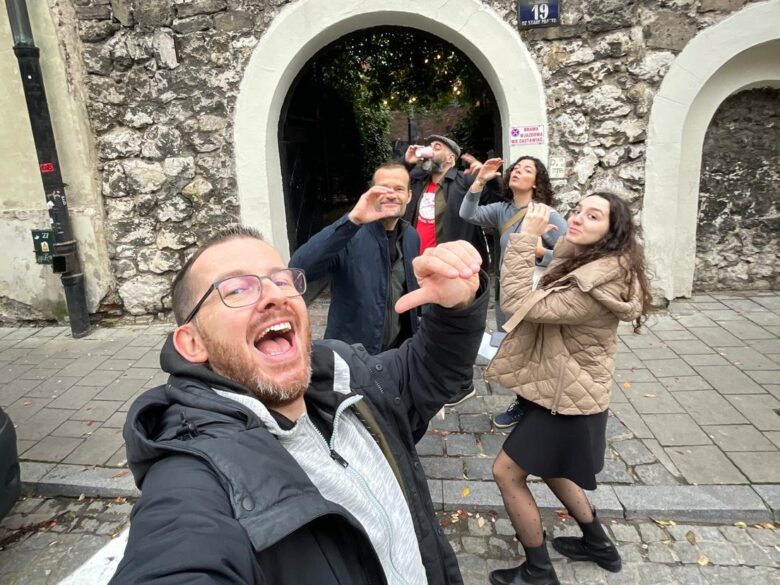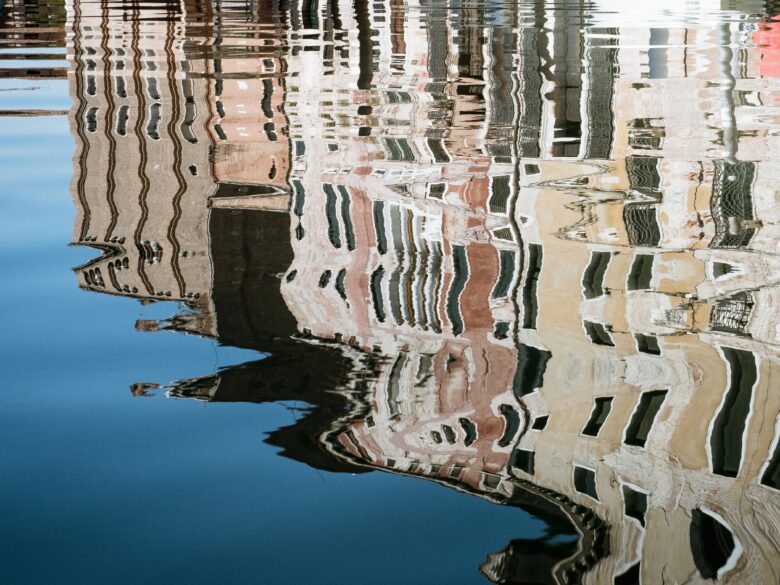Some people believe that making and keeping human habitats beautiful, useful, and/or inspiring is a municipal affair. Certainly, public money and management are crucial for improving the quality of life for all citizens. However, tedious bureaucracy, mismanagement, and a plain lack of imagination can create unattractive gentrified wastelands.
Here’s where urban interventions come in, fueled by the people’s love for their communities and a desire to create beauty. These grassroots projects managed to convert mundane places into an outlet for the creative juice of life to spring out.
We have gathered some examples of urban interventions carried out by artists and citizens from our network of cities in Europe. The best part? None of our selections need to be restrained by the limits of their respective cities! In fact, we hope they will become successful templates, and inspire eager and creative citizens around the world.
500+ Berlin trees have grown faces
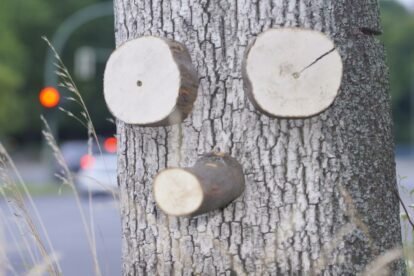
Tree Stumps with Faces Berlin (photo by Daniela Frisch)
Spotter Josephine is a Steglitz-Zehlendorf local, a neighborhood with about 62.000 trees; it’s a number that has been on the decline as of late, leaving many stumps behind. Harald Kortmann, another Steglitz-Zehlendorf resident, got fed up by the trees not being replaced and so started decorating the stumps. Now they have eyes, glasses, noses, and mouths, inspiring other artists to follow his lead and sparking interest in this topic of local politics.
There are now more than 500 tree stumps with faces in the area!
This Rotterdam street has become a chewing gum art gallery
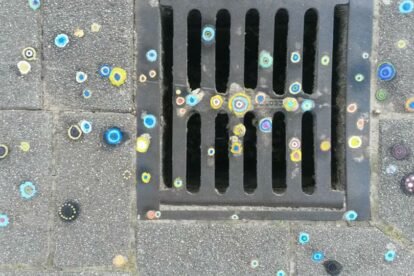
1.5km Chewing Gum Street Art (by Niewue Binnenweg Leeft)
A few years ago, artist Ben Wilson made the rounds by having the idea to paint chewing gum stuck on the pavement. Now he’s known as Chewing Gum Man.
Erica Sonneveld, a Rotterdam local, was inspired by Wilson’s mini works and initiated Nieuwe Binnenweg Kleurt (colours) –a 1.5 kilometers of chewing gum street art between the Eendrachtsplein and ‘sGravendijkwal.
Teachers, graphic students, and artists alike joined this two-week project. They used acrylic paint to decorate the chewing gum in front of numbers 1 – 65A and 6 – 182 on Nieuwe Binnenweg street.
Sadly, the art on the gum gets worn out by people stepping on it much quicker than the rest of the gum. “Most chewing gum is made from polymers which are synthetic plastics that do not biodegrade. Hopefully, this fun project makes you, next time you toss your gum, aim for trash cans instead of the sidewalks”, suggests our Spotter Anne-Marie.
You can find another chewing gum art project done by the original Chewing Gum Man, Ben Wilson himself, in London’s Muswell Hill and spotted by our local Kamla.
In Dublin, utility boxes have turned into shared communal canvases
According to their website, “Dublin Canvas is an idea, a community art project intended to bring flashes of color and creativity to everyday objects in the City. Less grey, more play. The project takes previously unused public space and transforms it into canvases to help brighten up the city, making Dublin a more beautiful place to live, work and visit.”
“Dublin Canvas allows any artist to apply to get a grey traffic light control box”, writes local Jean, “which he or she can use as a public canvas to showcase his or her artwork.”
Here is a map of the position of the boxes – those in red are completed artworks.
A tribute to the secret lives of the elderly in Lisbon’s Mouraria
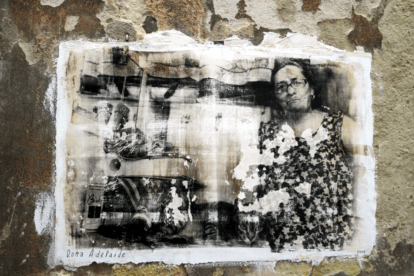
A Tribute by the Wall Lisbon (by Morgaine)
“The photographs on these walls are a tribute to the elderly people who live here. They walk this beco daily and their spirit makes this corner of Mouraria special.”
This is the inscription next to a number of the photographs that artist Camilla Watson, a friend of Spotter Alexandre, has decorated the walls of this Lisbon street with.
“I wanted to honor the elder ones living nearby – my neighbors”, she says. The buildings she chose to use as her ‘gallery’ looked like they hadn’t been touched in 100 years. Camilla then saw a connection between them and their inhabitants.
“All of the images on the wall here, the people in them, they’ve chosen the ones they’d like on the walls… […] they love it. They feel proud to be on the walls, and many more of them want to be on the walls. The tourists love it… I guess because the expression in the photos is between the subjects and me, so they get to be a step closer to the community.”
Find the full interview the quotes above were taken from here.
Budapest’s fire hydrants now quench thirst as well as fire
In Budapest, some young engineers had a simple but wonderful idea: to make drinking fountains out of fire hydrants! So they created a small device that does just that, called The Rehydrant project (Ivócsap Projekt). “It’s kind of a genius idea to make Budapest a little more comfortable and friendly during summer when the heat strikes”, our Spotter Julianna starts her article out with.
This is one of those useful, brilliant ideas that have no apparent downsides. Indeed, the fire brigade can still use the hydrants and Budapest locals and tourists don’t need to buy wasteful plastic bottles. to quench their thirst. OK, scratch that: you might have something to lose from this if you’re a water bottling company. But for everyone else, it’s a win-win situation.
Turin’s controversial free balcony concerts
Every Sunday at 17:00, there’s a “concertino dal balconcino” in this apartment building in Turin. The “little concert on the little balcony” attracts locals and tourists alike with its free spirit and lust for life.
At least, it used to attract them. Unfortunately, this weekly happening came under fire because of neighbors raising complaints. There was even a legal case against the ‘balconcino’ performers. It is true, the concert had become much more popular over the years since its beginnings in 2011, drawing more people and therefore creating more noise. However, the concerts always took place during the daytime and rarely lasted more than an hour. The whole case turned into a controversy about the fair use of public space and the right to quiet.
Since it was too difficult to tell if concerts would be there Sunday after Sunday, our Spotter Dario decided to take down his article from the Turin city blog. Still, things are far from over yet. Various happenings and concerts are being organized in support of the right ‘to sing and play music for one hour each week’. Indeed, the artists don’t seem ready to give up the fight at all!
You can read The Guardian’s piece on Concertino Del Balconcino for a more detailed overview of the story. Also, on the Concertino’s Facebook page you’ll find concert announcements, support protests, and developments on the legal case.

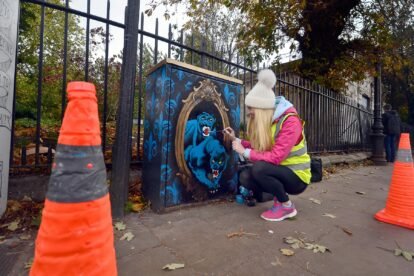
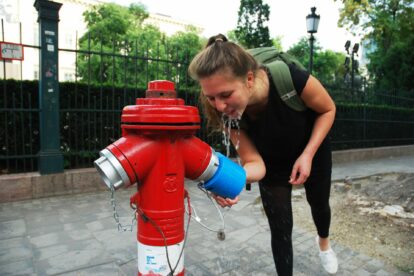
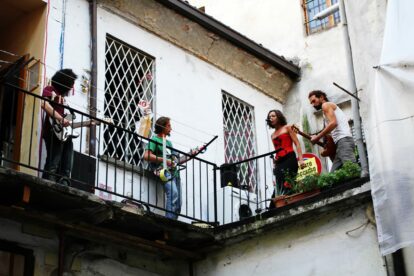
![10 Unique Flea Markets in Europe [2024 Update!]](https://www.spottedbylocals.com/wp-content/uploads/midnightbazar-munich-by-ayla-amschlinger.jpg)
